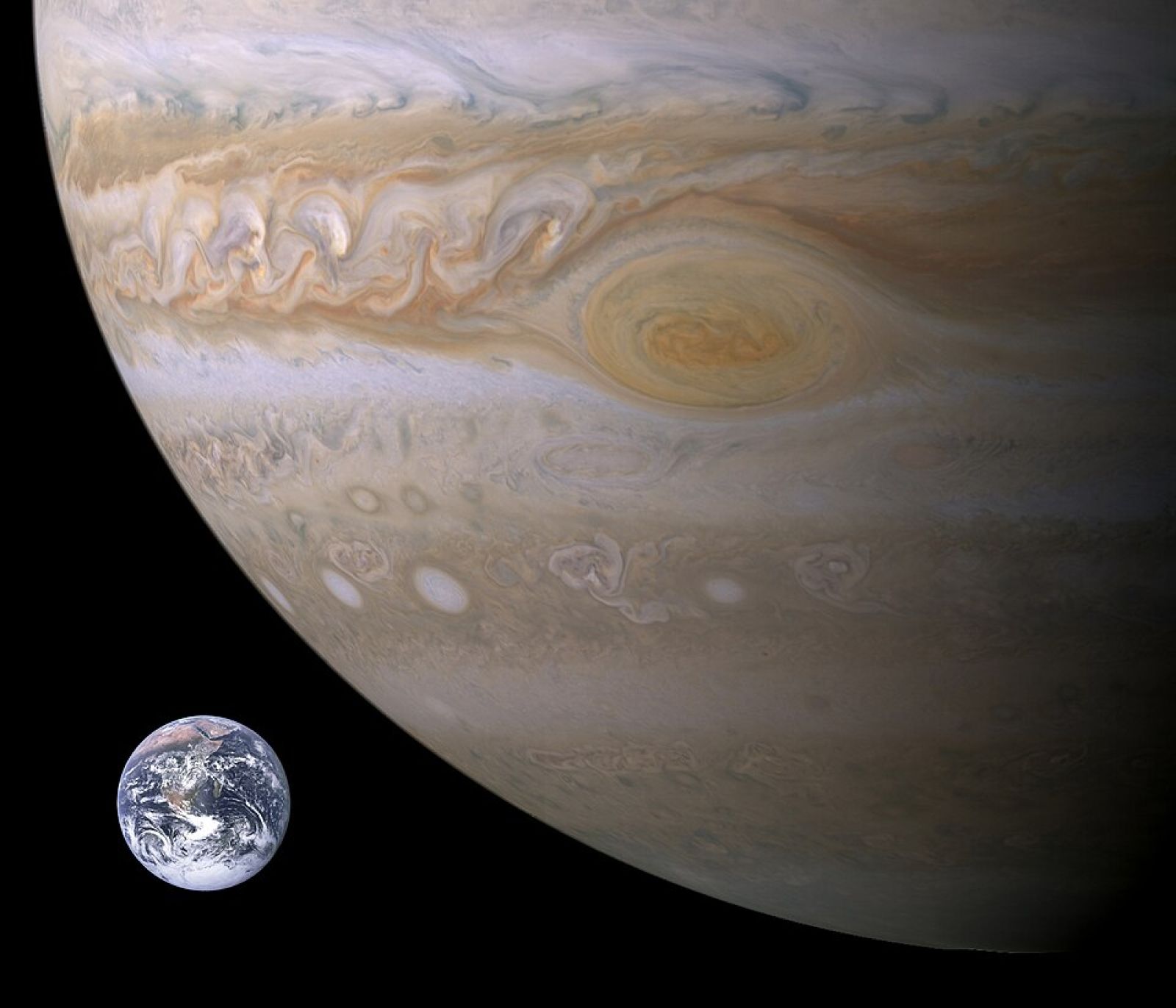💥 Jupiter protected Earth even before its birth, reveals study
Follow us on Google News (click on ☆)
Through advanced computer simulations, a team from Rice University reconstructed the first few million years of the Solar System. Their models show that Jupiter's colossal gravity disrupted the disk of gas and dust surrounding the Sun, forming rings of dense matter. These structures acted as "cosmic traffic jams," preventing dust grains from spiraling toward the star. Thus, the materials that would form Earth, Venus, and Mars were able to accumulate safely, far from the destructive heat of the center.
As it grew, Jupiter carved a wide gap in the protoplanetary disk, dividing the Solar System into two distinct zones: the inner zone, rich in rocky elements, and the outer zone, dominated by gases and ices. This separation prevented the mixing of materials between these regions, preserving unique isotopic signatures in meteorites. Isotopes are variants of the same chemical element that differ in their number of neutrons, and their study helps trace the origin of celestial bodies. This gravitational barrier also allowed for the later formation of planetesimals, the building blocks of planets.
The study published in Science Advances solves a long-standing puzzle: why some primitive meteorites, called chondrites, formed several million years after the first solids in the Solar System. These chondrites contain small molten droplets, called chondrules, which preserve a chemical imprint of the initial conditions. The researchers explain that Jupiter, by slowing the flow of matter, created the conditions conducive to a second generation of planetesimals, some of which are the source of these meteorites. Thus, the gas giant directly influenced the timeline of rocky body formation.
The rings and gaps predicted by these models are now observed around young stars using instruments like the Atacama Large Millimeter/submillimeter Array (ALMA) in Chile. These observations confirm that giant planets actively shape their environment during their formation. In our own Solar System, Jupiter's legacy is still readable in the meteorites that fall to Earth, true archives of the earliest moments. Without its intervention, the planetary architecture we know would probably not exist, and Earth itself could have had a very different fate.
The protoplanetary disk and its role in planet formation
The protoplanetary disk is a vast cloud of gas and dust surrounding a young, nascent star, like the Sun in its first few million years. It is the cradle of all planets, where matter gradually clumps together under the effect of gravity. This disk is dynamic: particles orbit the star and interact with each other, creating zones of varying density.
Temperature decreases with distance from the star, which influences the composition of planets. Near the Sun, volatile elements like water and gases evaporate or are expelled outward, making way for rocks and metals that will form terrestrial planets. Farther out, where it is colder, ices and gases can condense, giving rise to gas and ice giants. This distribution explains why Mercury, Venus, Earth, and Mars are rocky, while Jupiter and Saturn are primarily gaseous.
Gravitational perturbations, like those caused by a massive planet, can create rings and gaps in the disk. These structures act as dust traps, promoting the accretion of matter and the formation of larger bodies. Without these mechanisms, matter could be sucked into the central star or scattered into space, preventing the birth of stable planets.
Studying these disks around other stars, using observatories like ALMA, helps us better understand the universal processes of planet formation. Each stellar system has its own history, but the fundamental principles remain the same, linking our past to that of distant worlds.
Chondrites and their importance for Solar System history
Chondrites are a type of primitive meteorite that have hardly evolved since their formation over 4.5 billion years ago. They are considered time capsules, preserving the original composition of the solar nebula. Their name comes from chondrules, small spheres of melted and recrystallized silicates that make up a significant part of their structure.
These chondrules formed during brief, intense events, likely heat surges in the protoplanetary disk. Their chemical analysis reveals the temperature and pressure conditions at the time, as well as the presence of specific isotopes. Isotopes are atoms of the same element with a different number of neutrons; their proportions vary depending on the origin of the material and help trace its history.
Chondrites are classified into several groups, reflecting distinct formation environments in the early Solar System. Some come from the inner region, rich in refractory elements, while others originate from more external zones, containing more ices and organic matter. This diversity helps scientists reconstruct the geography of the young Solar System and the processes that led to planet accretion.
The discovery of chondrites formed several million years after the first solids indicates that the solar nebula experienced episodes of renewal or disturbance. These late meteorites provide clues about the influence of giant planets, like Jupiter, which may have extended the formation period of small bodies by altering the dynamics of the disk.
